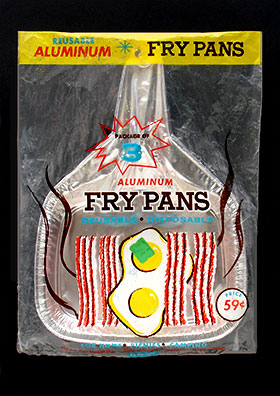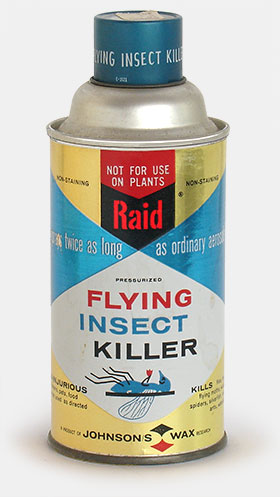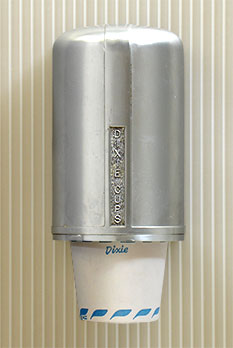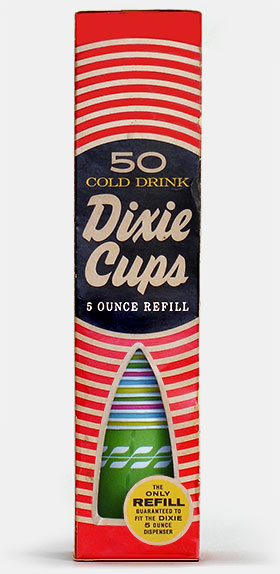It started, some say, with the invention of the disposable razor blade in the 1800s. Then came disposable shirt fronts and collars made of paper. Comfy! And the stage was set in the industrialized world for an ever-growing list of items we buy, use once, and discard. Here are some choice mid-20th-century examples.

I can just imagine the fun one would have using the disposable Aluminum Fry Pans from E-Z Por Corp. Can you say 9-1-1?
In this 1950s magazine ad, Tote those empties? Or toss ’em away?, two housewives wrestle with the thorny question of what to do with the beverage containers their loving charges have emptied. The idiot on the left is stuck with the task of returning to the store those nasty reusable glass bottles she so stupidly bought, while the smarter, blonder, housewife just sends all her steel cans to the landfill where someone else can worry about them.
Coincidentally, this little object lesson is brought to us by the makers of those very same steel cans, Bethlehem Steel. And don’t forget (as the ad tells us): “Soft drinks in steel cans taste so darn good!”
Raid Pressurized Flying Insect Killer from Johnson’s Wax, c. 1960s. Not often thought of as a disposable item because it may contain enough for several uses, nevertheless the aerosol can is indeed a single-use item because it can’t be refilled. It replaced manual, refillable, hand sprayers.
The cup may be disposable but this dispenser isn’t going anywhere. It’s quite hefty and appears to be cast aluminum, Dixie Cup Co., Easton, PA, Chicago. c.1940s.
And here’s the colorful, classic 1960s version of the Dixie Cup. Devised in 1912 more for health reasons than mere convenience, the Dixie cup was called “Health Kup” until 1919. Before disposable cups and water fountains, it was common for people to use a community cup or dipper to drink water from public water barrels, easily spreading communicable diseases.
But why disposables? If collecting is about preservation and permanance, isn't disposability a concept contrary to the very nature of collecting? Well, you’ve got me there.
My guess is that collecting these things is an expression of contrariness—a common collector trait, or some attempt to be socially responsible, at least in some small way, by negating the wastefulness of disposability in the act of refusing to throw the objects out.
In what is being increasingly seen as an age of limits, many are questioning the concept of disposability. In discussions of its cost to our environment, well-meaning opponents have a strong case. It’s almost always to no avail, though, because the incentive for disposables is so vastly underestimated by the leisure classes who do the discussing. They just don’t get it. Disposables are about saving time. For real folks, this is no longer optional; it is a necessity. You can’t have a world where time efficiencies are continually being gained for organizations at the expense of individuals and expect no consequence.
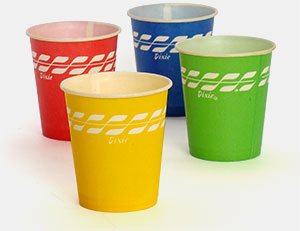
Think about that the next time you need to call a large organization on the phone and spend twenty minutes of your day just to have a two-minute conversation.
